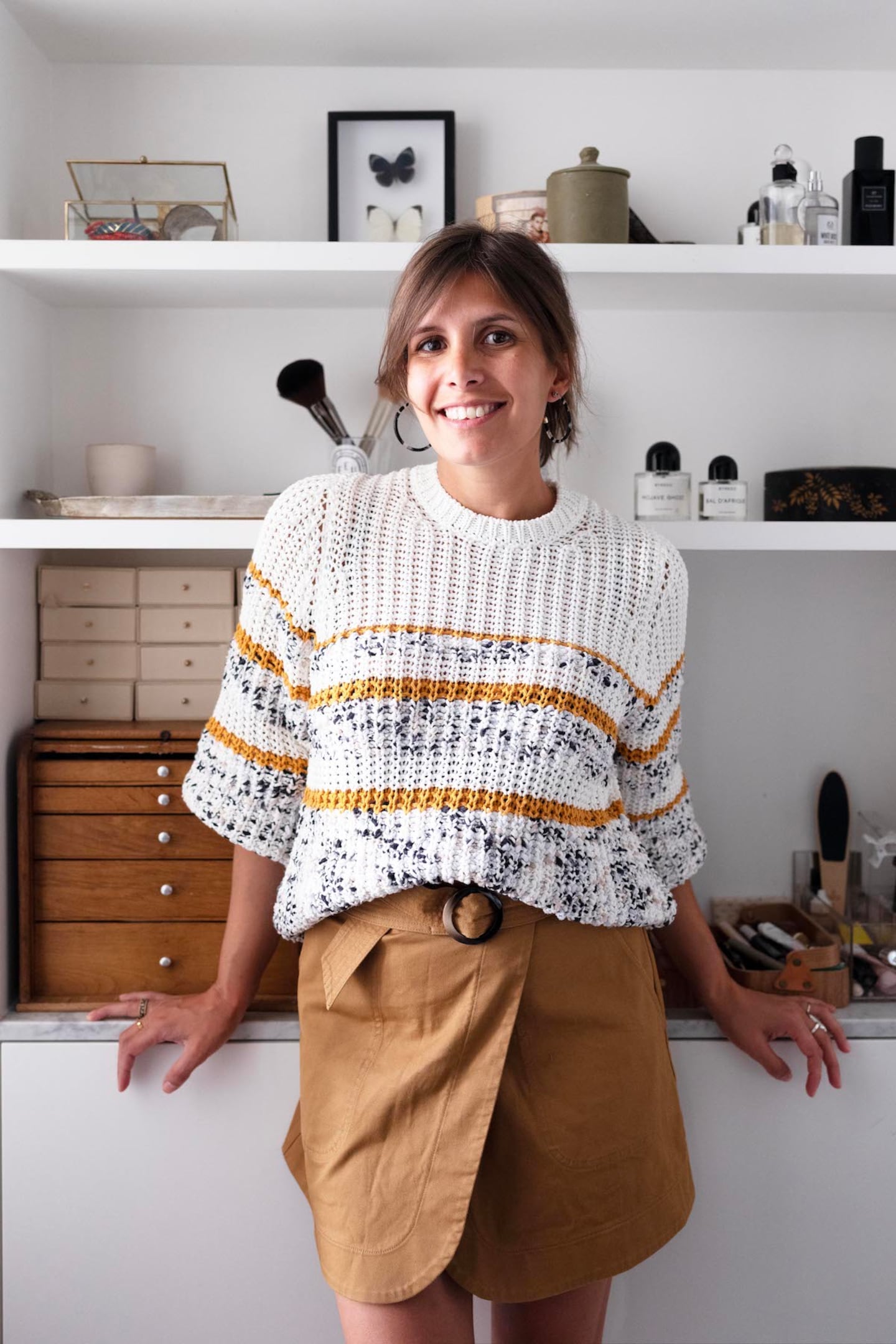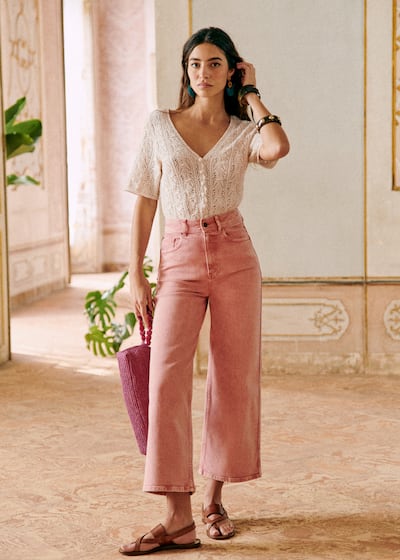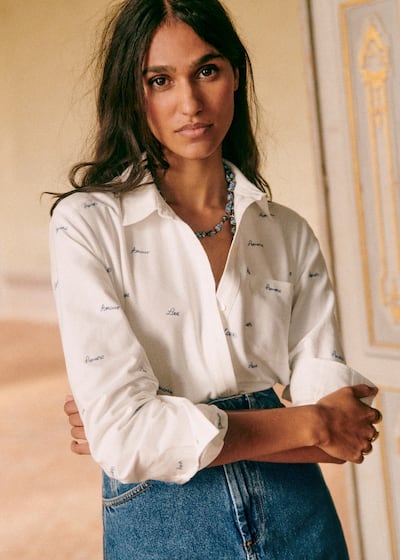
The Business of Fashion
Agenda-setting intelligence, analysis and advice for the global fashion community.

Agenda-setting intelligence, analysis and advice for the global fashion community.

When Parisian entrepreneur Morgane Sézalory started an online business in the late naughts, no one in the French fashion industry took much notice. Just years later, American brands like Everlane and Glossier would raise millions of dollars in funding on the premise of direct-to-consumer e-commerce, but back then, Sézalory was a true pioneer.
“I was like E.T. — someone coming from another world — for the industry,” Sézalory said. “It’s funny because the press and a lot of people in the industry were thinking it couldn’t be a serious [business].”
They were wrong. Sézalory’s label, Sézane, which she launched in 2013, is the biggest digitally native fashion success story to come out of France. Its handful of stores across Paris, New York and London regularly garner queues around the block, as shoppers jockey to get their hands on the brand’s €150 floaty dresses, €70 breton-stripe tops, €100 boyfriend shirts and €175 relaxed blazers.
Thanks to its sweet-spot pricing, strong brand identity and close connection with its customers, Sézane has managed to grow consistently — and profitably — since it launched, Sézalory said. Sales rose 30 percent year-on-year in 2022, she added. Sézalory declined to comment on the brand’s annual sales figures, but Sézane was reportedly on track to hit €250 million last year. In September, the company sold a minority stake to Tethys, the family office of L’Oréal heirs, the Bettencourt-Meyers.
ADVERTISEMENT

As other DTC brands like Warby Parker, Allbirds and Glossier grapple with continued losses and stagnating growth — many have now entered wholesale, a channel they eschewed just years earlier — Sézane is proof that the original direct-to-consumer model still works. The brand does not have any wholesale exposure, nor does it plan on partnering with multi-brand retailers in the future.
Instead, Sézane is eyeing the retail expansion in the US market as it scales the business. This week, the brand will open its Los Angeles flagship store — its third location in North America — on the heels of rolling out a new homeware sub-brand, Les Composantes.
“To be honest, I don’t think of Sézane as a classical DTC, because most of the brands like that, they started with a business strategy, they raised money a lot of them, and me not at all,” Sézalory said. (While Sézane was self-funded in the beginning, the company did go on to raise venture capital, bringing Summit Partners as a minority investor in 2015. Three years later, General Atlantic acquired Summit’s undisclosed stake, while Tethys purchased an undisclosed minority share last year.)
For now, there’s plenty of opportunity for growth at Sézane without wholesale — although crossing a certain threshold later down the line might require tweaking the business model.
Frederic Court, founder of Felix Capital, called Sézane a missed opportunity for his VC firm, which has invested in companies from Goop and Mejuri to Farfetch.
“It’s one of the most inspiring brands we’ve seen from Europe, building an authentic brand with a great community, having a wonderful range — very accessible — with a very clear identity,” Court said. “There are very few of these brands that started online that have built a very healthy business with global appeal.”
Sézalory’s path began in 2004, selling vintage clothes on eBay while on a gap year after school — a similar beginning to Nastygal, whose founder Sophia Amoruso also got her start as an eBay seller. Skipping university, Sézalory decided to set up her own website, Les Composantes, which sold vintage finds via a monthly “rendez-vous” drop of 100 pieces.
Over the years her following grew; she began adding her own designs to the mix, which soon began to eclipse the vintage side. This prompted Sézalory, who remains CEO and creative director of the brand, to relaunch the website as her own label in 2013.
ADVERTISEMENT
“I decided I needed to clarify and make it clear what I was doing, so I transformed the name and made it Sézane,” she said.
Sézane’s proposition was selling high quality, vintage-inspired designs at a “very honest” price, said Sézalory. Instead of spending on marketing and advertising, Sézalory invested profits into product development and design — the key area where other DTC fashion startups have struggled to maintain an edge. Without stockists or sprawling retail networks, Sézane was able to offer more competitive prices compared to other French contemporary labels like Sandro, Iro and Isabel Marant.
“It’s getting that luxury look for an affordable price point — that’s where Sézane really comes out on top when you look across its competitors,” said Krista Corrigan, analyst at retail analytics firm Edited, noting that about 70 percent of the brand’s offering is priced at £150 ($189) or less.
The drop model was instrumental in building hype and excitement around the brand, with limited-run products selling out quickly online. Each month, the brand produced a digital lookbook of the upcoming capsule, teasing newness a few days before a drop. The setup also minimised leftover stock for the brand, which doesn’t go on sale.

Prioritising customer service also helped Sézane build strong loyalty: even though the brand wasn’t scaling its customer base as fast as it might have if it had invested heavily in digital marketing, the customers that did discover the brand stuck around. Its fans quickly became the brand’s best advertisement: word of mouth remains the brand’s biggest acquisition tool, Sézalory said.
“I know we could grow a lot faster all the time,” she said. “But I always made it clear with myself and my team that we need to establish limits and we stick to it.”
Ready-to-wear is the brand’s bread and butter, but it’s built a strong business in higher margin categories like bags and shoes, which make up 35 percent of the business. Its menswear sub-brand, Octobre Editions, is small but growing fast — on track to drive 20 percent of company sales this year, Sézalory said.
Sézalory is hoping that homeware will soon become one more revenue stream for the business. The Les Composantes line posted its first drop this week, including €245 lamps and €70 cushions with a selection of vintage furniture and Italian ceramics. A kidswear line is also in the works, Sézalory said.
ADVERTISEMENT
E-commerce, which makes up 90 percent of brand sales, has been complemented by physical outposts. In 2017, the brand debuted its L’Appartement concept — spaces designed to feel more like Parisian apartments than clothing stores — as a way for shoppers to experience the brand in real life. Today Sézane has 10 locations in France (across Paris, Bordeaux, Lille and Provence), two in the US (New York and San Francisco) and one in the UK (London).
This week, the brand will open its newest Sézane Appartement in Brentwood, an upscale neighbourhood in Los Angeles. It comes as Sézane prepares to open a satellite office in the city in September to oversee the US market, which drove 25 percent of brand sales in 2022. Further store openings in Lyon and London site are planned for later this year too.
“They treated it in such a specialty boutique way,” retail consultant Robert Burke said of the Appartement store concept. “It’s cosy; it feels like a French vintage shop with this sense of discovery, and the customer is really drawn to it.”
Felix Capital is part of a group of investors who, together, hold a minority interest in The Business of Fashion. All investors have signed shareholder’s documentation guaranteeing BoF’s complete editorial independence.
The Bettencourt-Meyers family office is taking a minority stake in the Paris-based fashion label, whose sales have skyrocketed in recent years.
With the direct-to-consumer funding heyday now over, DTC brands need to turn a profit. Unlike their revenue-obsessed counterparts, DTC pioneers Marine Layer, Meundies and Trinny London offer a blueprint for achieving both top- and bottom-line growth.
The market may be cooling, but a number of in-demand brands remain of interest to financial backers. BoF identifies the top targets.
The Los Angeles-based accessories label has been a well-kept secret in the industry, but founders Yang Pei and Stephanie Li are hoping to change that through new acquisitions, opening brick-and-mortar stores and using AI to speed up the design and production process.
Designer Carly Mark sparked conversation about what it takes to make it as an emerging designer in New York when she announced she was shutting her ready-to-wear line and moving to London. On Thursday she held her last sample sale.
To stabilise their businesses brands are honing in on what their particular consumer wants to buy, introducing new categories and starting conversations.
That’s the promise of Zellerfeld, a 3D-printing partner to Louis Vuitton and Moncler that’s becoming a platform for emerging designers to easily make and sell footwear of their own.